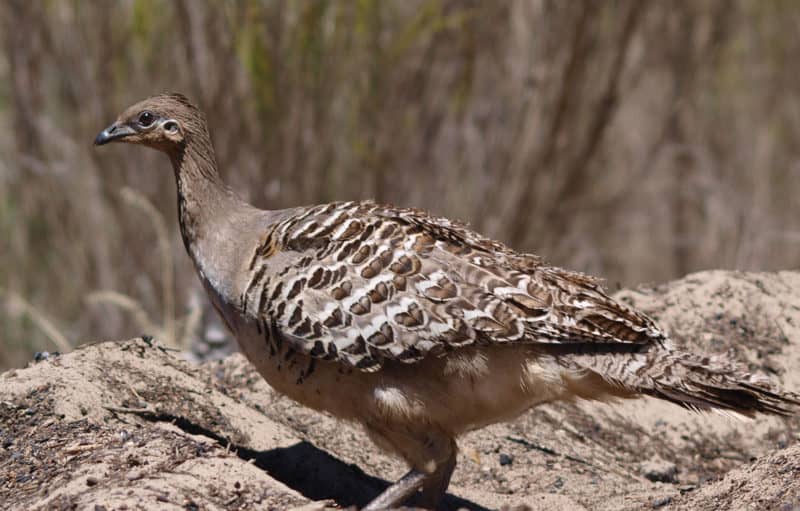PARK WATCH December 2018 |
Ben Courtice reports back on a conference about one of Victoria’s most threatened natural environments.
Werribee lies in the heart of Melbourne’s western grassy plains, a region that is home to critically endangered native grasslands, yet also amid one of Melbourne’s fastest growing suburbs.
This was the setting for the inaugural conference of the new Grassy Plains Network exploring the theme Respect, Protect, Reconnect Melbourne’s Grassy Plains. Hundreds of participants crowded the Wyndham Council offices in Werribee for the Grassy Plains Conference on 12-13 October. The enthusiasm for the environments of the grassy plains, and the desire to better understand and protect them, was undeniable among conference participants.
VNPA sponsored the conference, and Executive Director Matt Ruchel presented on this important issue of nature conservation in Victoria.
Native grasslands, dazzling in their diversity of wildflower species, are found on the volcanic plains that stretch from Melbourne right across the west of the state. Since European settlement this fertile land has a long history of being used for agriculture and, more recently, urban expansion. The grasslands have now been reduced to less than 1 per cent of their original extent.
Grasslands, or flowerlands?
The backdrop to the conference was the iconic Volcano Dreaming exhibition, a 12-panel photo-collage depicting the beauty, detail and stories of the whole Victorian volcanic plain (see: www.volcanodreaming.com.au). Creators Peter Haffenden and Kerrie Poliness told the story of their journey of learning about the volcanic plain in order to create this endearing and enduring piece of work.
“We had a museum background and initially couldn’t see the natural beauty that the experts talked about. It seemed to live in their minds,” said Peter Haffenden. “Eventually we visited hundreds of sites, and had our own eureka moments. Really, these grasslands should be called ‘flowerlands’ to grab people’s attention.”
Overdevelopment still a threat
Immediate concerns for conservation raised at the conference were that many remnant grasslands are still being lost slowly to weed invasion, overgrazing, and other poor management practices. At the same time, a few remaining high-quality grassland patches within existing development areas are at risk of being lost in a few scrapes of an excavator.
The conference heard that a private developer has applied to the federal government to destroy part of a grassland reserve originally set aside to compensate for development impacts within the Williams Landing development in Wyndham City. This would put hundreds of endangered plants, including the endangered spiny rice flower, and also possibly endangered striped legless lizards, at risk.
The practices of private developers and land bankers pose a significant threat to the remnant grasslands of the area, as they are either developed or left to deteriorate.
Yet the potential to turn neglected remnants into vibrant nature reserves was tangible to conference participants, with hard work from government and private conservation organisations also highlighted.
Broadening the knowledge base
Uncle Dave Wandin from the Wurundjeri Council and Reg Abrahams from the Wathaurong Aboriginal Cooperative were strongly supported in calling for including and learning from Traditional Owners in grassland management. An example of this would be roles on technical advisory groups for grassland conservation and restoration that have been proposed to be established.
“The ecology shaped our culture and we shaped the ecology”, Uncle Dave said. “We’d like to see our land management supported with federally funded Indigenous land and sea rangers, something that is common in most other states. Let’s walk country together.”
Colleen Miller, Secretary of NatureWest, presented the beginnings of an online interactive map to show the locations of protected and unprotected grasslands to the public. The tool could allow the fragmented organisations that manage grasslands, and community supporters, to create a shared knowledge around management history and actions. This improved collaboration is important for improving conservation outcomes on the plains.
Grassy Plains Declaration
Across the two days a Grassy Plains Declaration was drafted. Reflecting the conference themes, it asks that Melbourne’s grassy plains be known, valued and conserved. The Western Grassland Reserves areas, designated by the Victorian Government to protect endangered grasslands outside the Urban Growth Boundary, are currently expected to be slowly acquired between now and 2040. The declaration recommends that the areas should be immediately purchased and managed upfront, along with a number of valuable grassland areas currently owned by developers within the existing urban area. A commitment to actively manage the reserves and turn around the slow process of fragmentation, degradation and the legacy of past damage is an essential part of this.
You can read the declaration at www.grassyplains.org.au. Anyone interested in this new group is encouraged to get in touch by email: [email protected]
Did you like reading this article? Want to be kept up to date about nature issues in Victoria? Subscribe to our email updates.
You can also receive our print magazine Park Watch four times a year by becoming a member. Find out more here.
